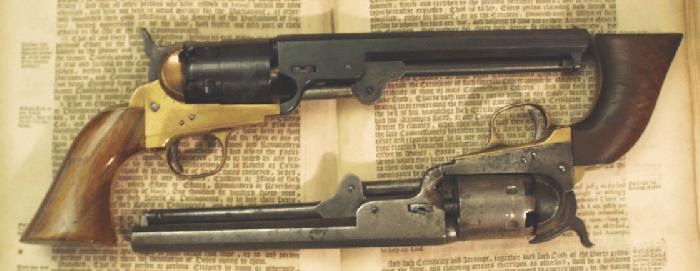Guest
I posted last week that I bought a Navy Pietta .44 1861 navy in .44, likely unfired.
Someone mentioned that if'n 'twer a "Navy Colt" Navy, t'would be a .36, not a .44.
I paid no never mind as I wanted it no matter who it's parents were or it's ethnicity :what:.
Anyway, some light research on my part reveals the "Navy" was an 1860 NOT an 1861, and it were a .36 NOT a .44.
I don't have the critter yet, still in route, but if it is a .44 then it isn't an 1861 navy?
Might it be a replica of a .1861 navy, but bored .44 for the
'Merkin market?
Got any e-resources so i kin looks it up fer'a proper edjamikation?
I want it fer a shooter to go along with me Zouave to take on me hysterical trekking this Feb.
Someone mentioned that if'n 'twer a "Navy Colt" Navy, t'would be a .36, not a .44.
I paid no never mind as I wanted it no matter who it's parents were or it's ethnicity :what:.
Anyway, some light research on my part reveals the "Navy" was an 1860 NOT an 1861, and it were a .36 NOT a .44.
I don't have the critter yet, still in route, but if it is a .44 then it isn't an 1861 navy?
Might it be a replica of a .1861 navy, but bored .44 for the
'Merkin market?
Got any e-resources so i kin looks it up fer'a proper edjamikation?
I want it fer a shooter to go along with me Zouave to take on me hysterical trekking this Feb.






